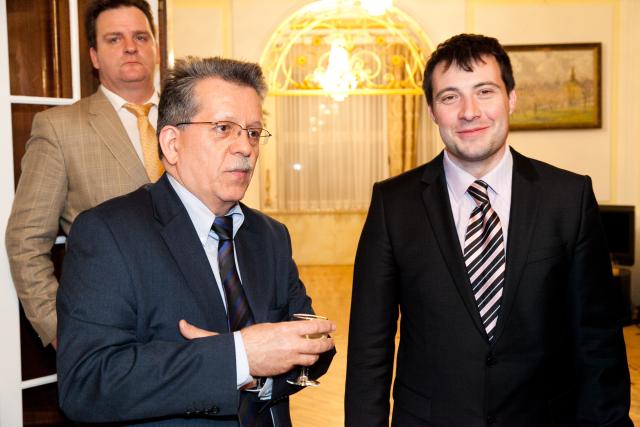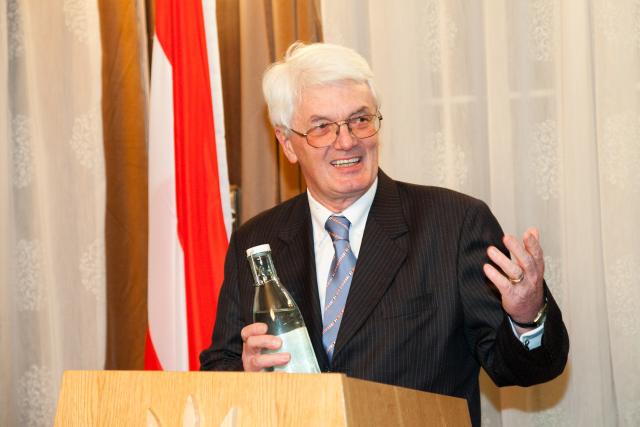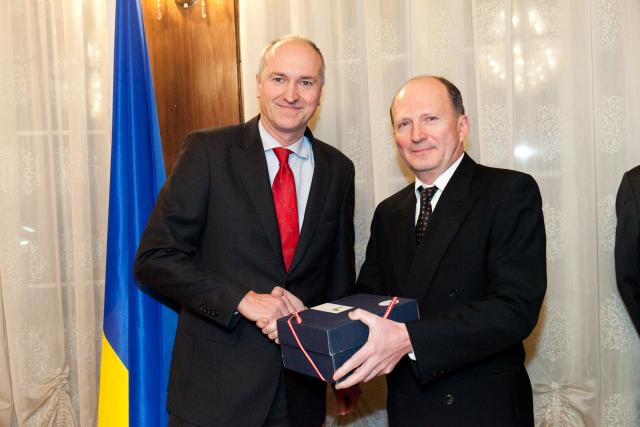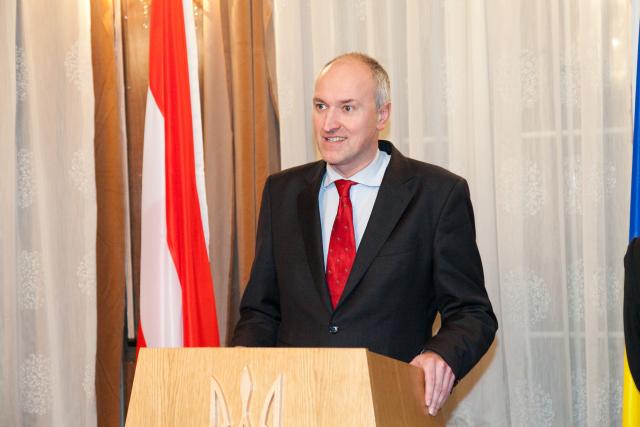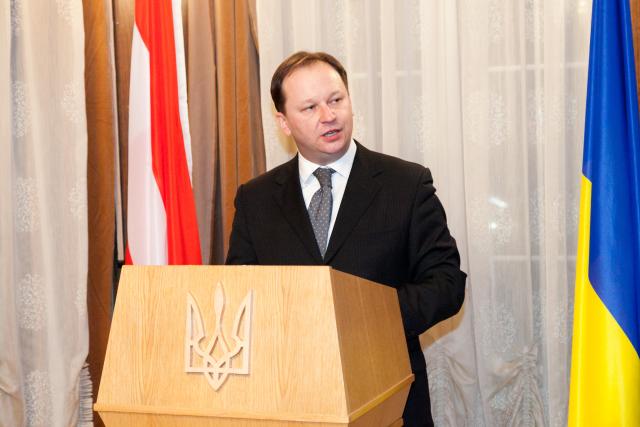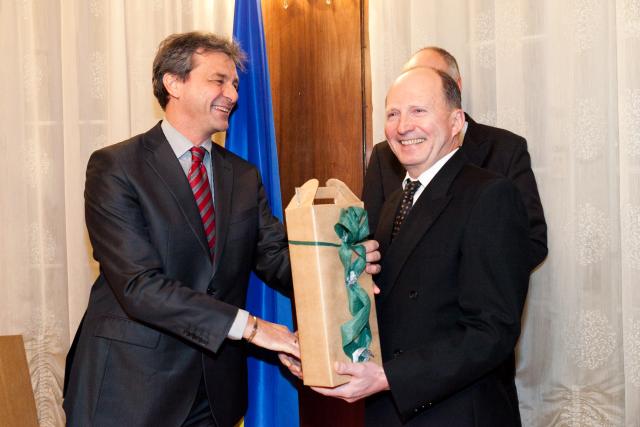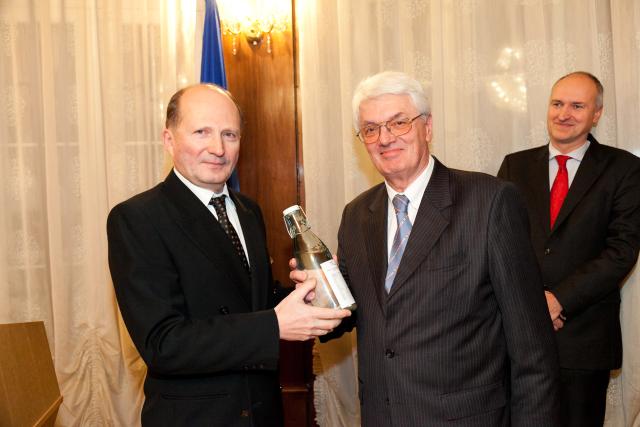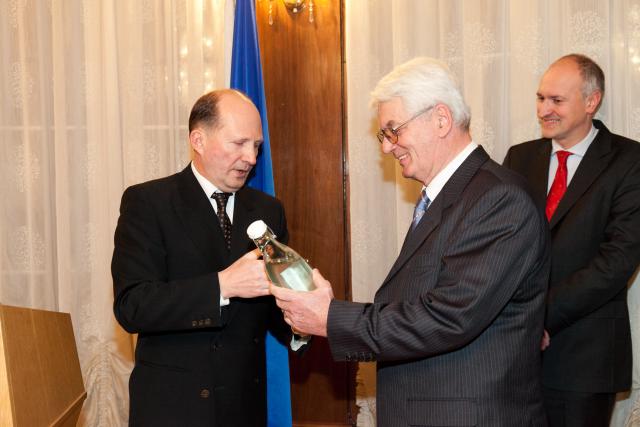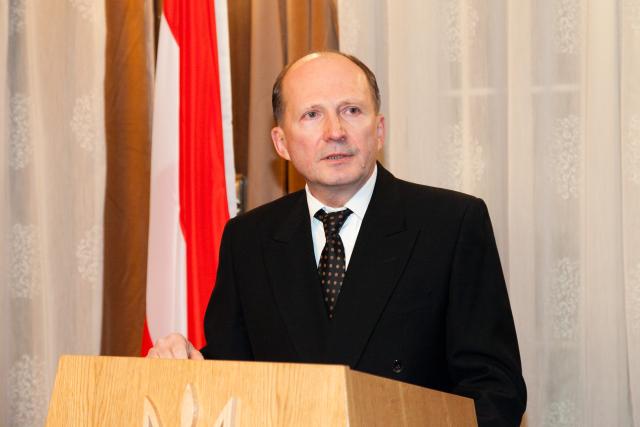Austria takes over ICPDR Presidency
Vienna, 18 January 2012. In the framework of a ceremony held in Vienna today, Austria took over the presidency of the International Commission for the Protection of the Danube River (ICPDR). The former President, Mykola Melenevskyi of Ukraine, passes his office on to Wolfgang Stalzer of Austria.

The transition was welcomed by Austrian Minister of the Environment Niki Berlakovich: “With its groundbreaking environmental policy, Austria plays a pioneering role in protecting the Danube. Many challenges lie ahead of us: managing the effects of Climate Change; the implementation of the EU Water Framework Directive; or the successful pursuit of the EU Strategy for the Danube Region. Today, we take over the presidency of the ICPDR from Ukraine and we will pursue the protection of the Danube with the highest priority.”
“I will work towards strengthening the cooperation within the ICPDR,” says incoming President Wolfgang Stalzer. “Only by cooperative action will we be able to master challenges such as climate change, the international coordination of flood protection or pollution reduction.” For Stalzer, it will be his second term as ICPDR President – he already served in this office in 1998 shortly after the ICPDR’s establishment.
Focus areas for 2012
For 2012, he emphasizes the importance of integrated environmental planning to balance the needs of nature and society. “In times of budget cuts, this is not an easy task,” he adds. He hopes, however, that the EU Strategy for the Danube Region will contribute positively to the economic, social and cultural development of the Danube River Basin - under strict consideration of the environment.
The environment of the Danube and its catchment area have been significantly improved in recent years; however, there are still major challenges. A River Basin Management Plan was developed for the Danube in 2009, which is currently being implemented. It is based on four “Significant Water Management Issues”. These are organic, nutrient and hazardous substance pollution as well as hydro-morphological alterations (changes in the river's structure). ICPDR will publish a report on the progress of the management plan’s implementation later this year.
One area, in which measures are continuously improved is the treatment of wastewater. Within the Danube River Basin, there are approximately 6,200 large settlements, including 137 major cities. These cities are responsible for approximately 46 per cent of the total wastewater load of the Danube. The development of central wastewater treatment plants as well as the decentralized treatment of wastewaters aims to reduce these pollution loads by no less than 50 per cent by 2015.
Further Impressions from the Handover Ceremony below in the gallery.








